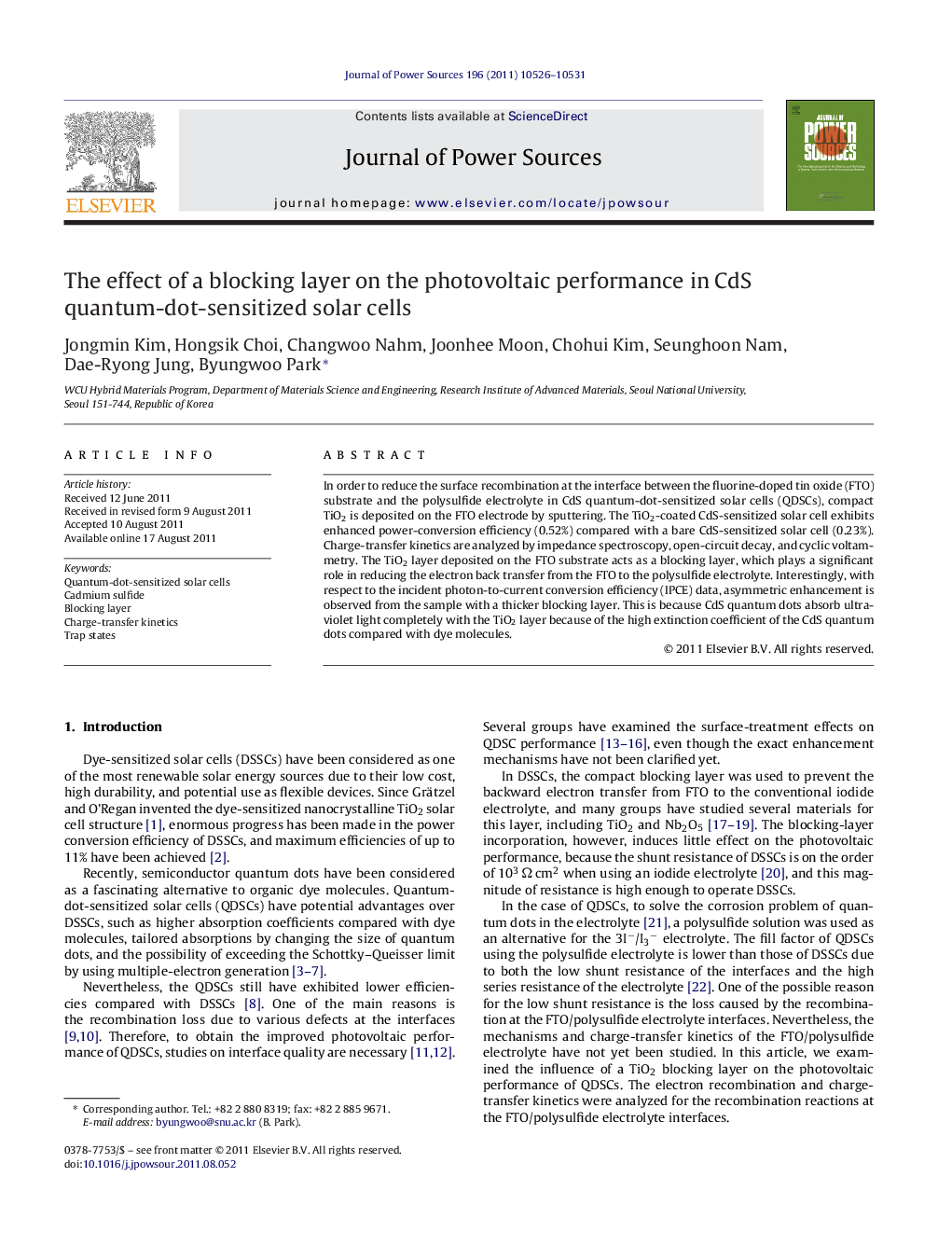| Article ID | Journal | Published Year | Pages | File Type |
|---|---|---|---|---|
| 1288732 | Journal of Power Sources | 2011 | 6 Pages |
In order to reduce the surface recombination at the interface between the fluorine-doped tin oxide (FTO) substrate and the polysulfide electrolyte in CdS quantum-dot-sensitized solar cells (QDSCs), compact TiO2 is deposited on the FTO electrode by sputtering. The TiO2-coated CdS-sensitized solar cell exhibits enhanced power-conversion efficiency (0.52%) compared with a bare CdS-sensitized solar cell (0.23%). Charge-transfer kinetics are analyzed by impedance spectroscopy, open-circuit decay, and cyclic voltammetry. The TiO2 layer deposited on the FTO substrate acts as a blocking layer, which plays a significant role in reducing the electron back transfer from the FTO to the polysulfide electrolyte. Interestingly, with respect to the incident photon-to-current conversion efficiency (IPCE) data, asymmetric enhancement is observed from the sample with a thicker blocking layer. This is because CdS quantum dots absorb ultraviolet light completely with the TiO2 layer because of the high extinction coefficient of the CdS quantum dots compared with dye molecules.
Graphical abstractFigure optionsDownload full-size imageDownload as PowerPoint slideHighlights► The electron-recombination mechanisms within FTO/electrolyte interface are analyzed. ► The TiO2-coated solar cell exhibits enhanced efficiency by more than a factor of two. ► The electron-carrier lifetime is one order of magnitude higher than bare sample. ► IPCE shows asymmetric behavior due to high extinction coefficients of quantum dots.
